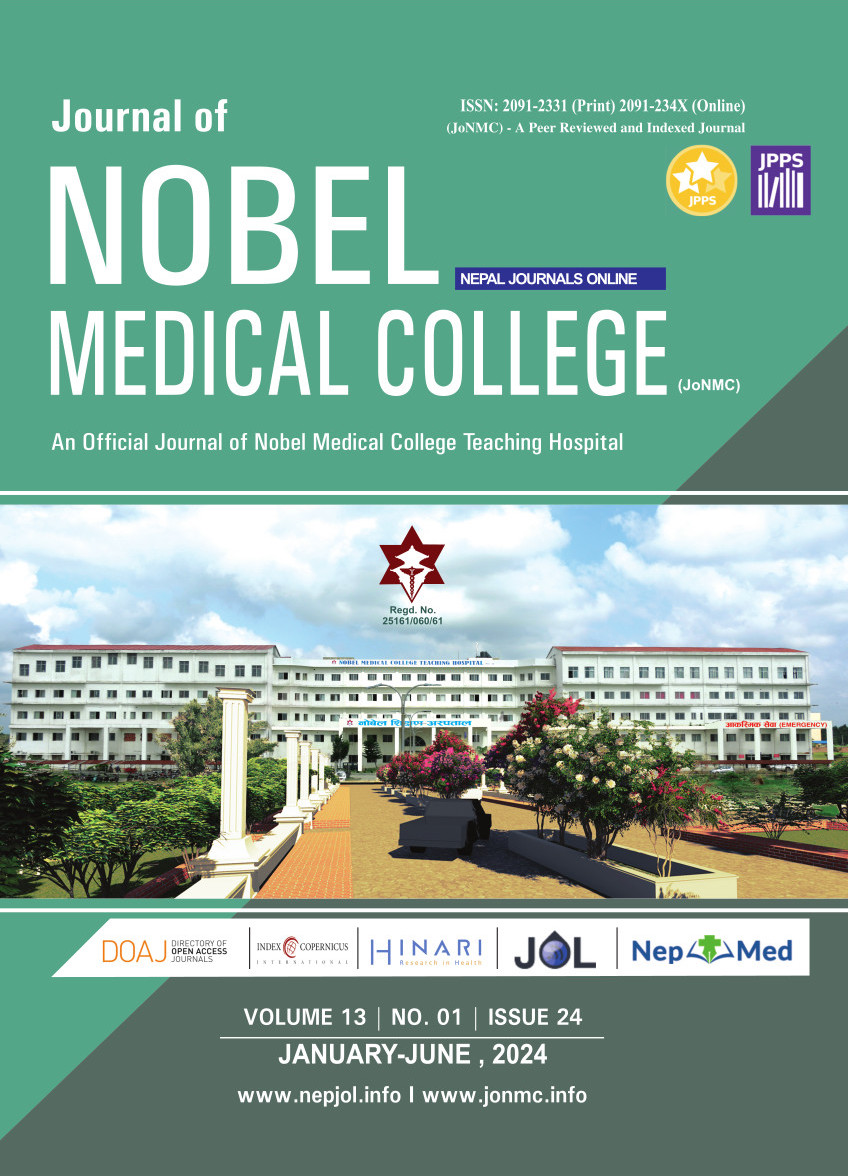Study of Aerobic Bacteria from Surgical Site Infection and their Antibiotic Susceptibility Pattern at a Tertiary Care Centre in Eastern Nepal
DOI:
https://doi.org/10.3126/jonmc.v13i1.68108Keywords:
Antimicrobial susceptibility, Escherichia coli, Surgical site infection, Staphylococcus aureusAbstract
Background: The surgical site infections are the third most common nosocomial infection. The most common organism is Staphylococcus aureus. Nepal has a 4-7% overall prevalence rate for surgical site infection. The study objective was to find out the aerobic bacteria from surgical site infection and their antibiotic susceptibility pattern in a tertiary care hospital in Nepal.
Materials and Methods: A descriptive cross-sectional study was conducted at a tertiary care center with effect from September 2022 to September 2023 approval from the Institutional Review Committee. Pus samples were taken from the postoperative wound infection site and submitted to the microbiological laboratory for culture and sensitivity. Gram-positive aerobic bacteria and gram-negative aerobic bacteria were isolated and identified by standard microbiological procedures. An antimicrobial susceptibility test was done on Muller-Hinton agar using the Kirby Bauer disc diffusion method. The result was interpreted according to clinical and laboratory standard institute guidelines.
Results: The rate of surgical site infection was 22.24% and the most common organisms isolated were Staphylococcus aureus followed by Escherichia coli and Pseudomonas aeruginosa. All the gram-positive cocci were sensitive to linezolid, teicoplanin, and vancomycin and gram-negative bacteria were sensitive to meropenem, piperacillin/tazobactam, cefoperazone/sulbactam and cefepime.
Conclusion: The present study concluded that the most common aerobic bacteria isolated from surgical site infection in our setting was found to be Staphylococcus aureus. This study also showed that the gram-positive aerobic bacteria were most susceptible tolinezolid, and teicoplanin, and gram-negative aerobic bacteria were sensitive to meropenem, piperacillin/tazobactam, and cefoperazone/sulbactam.
Downloads
Downloads
Published
How to Cite
Issue
Section
License

This work is licensed under a Creative Commons Attribution 4.0 International License.
JoNMC applies the Creative Commons Attribution (CC BY) license to works we publish. Under this license, authors retain ownership of the copyright for their content, but they allow anyone to download, reuse, reprint, modify, distribute and/or copy the content as long as the original authors and source are cited.




